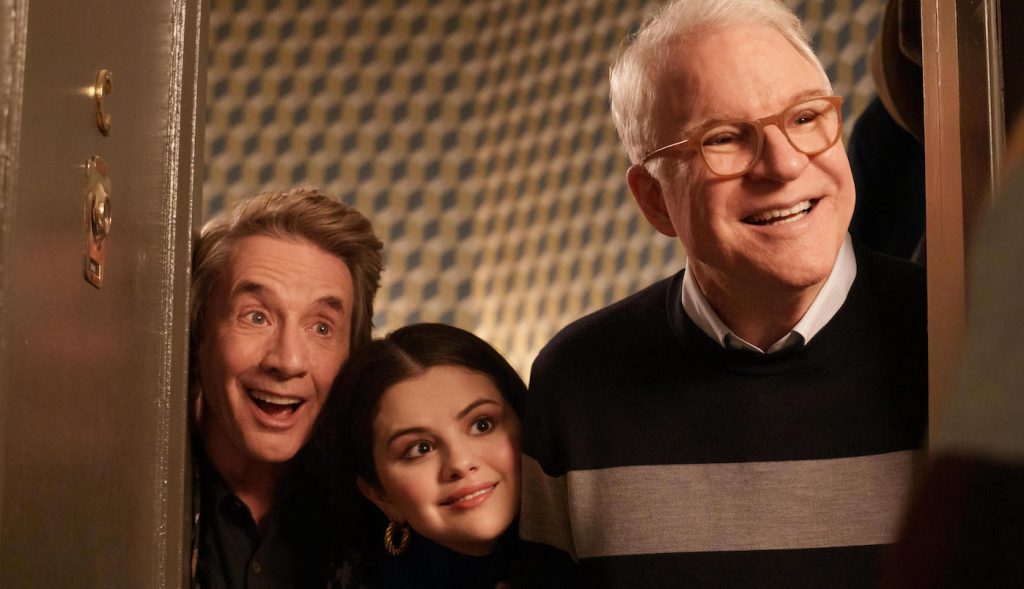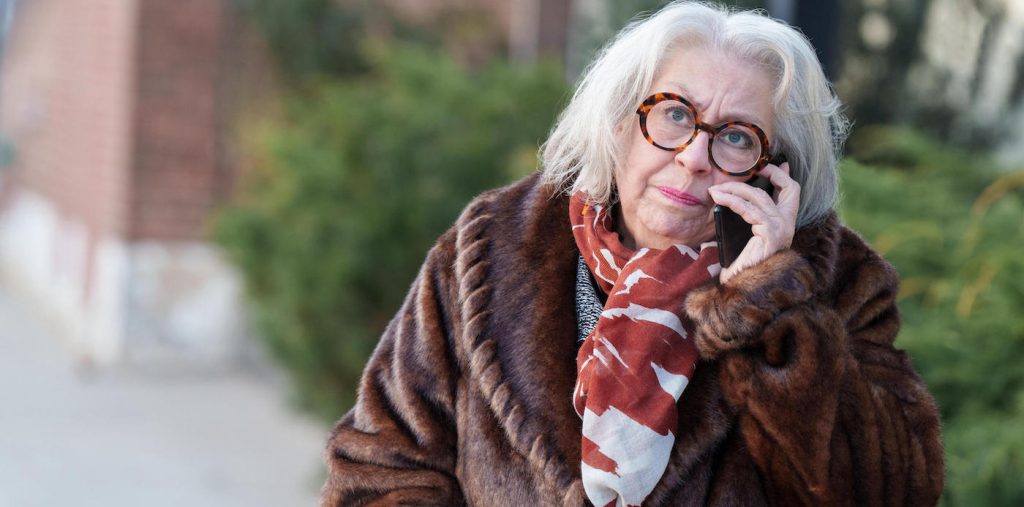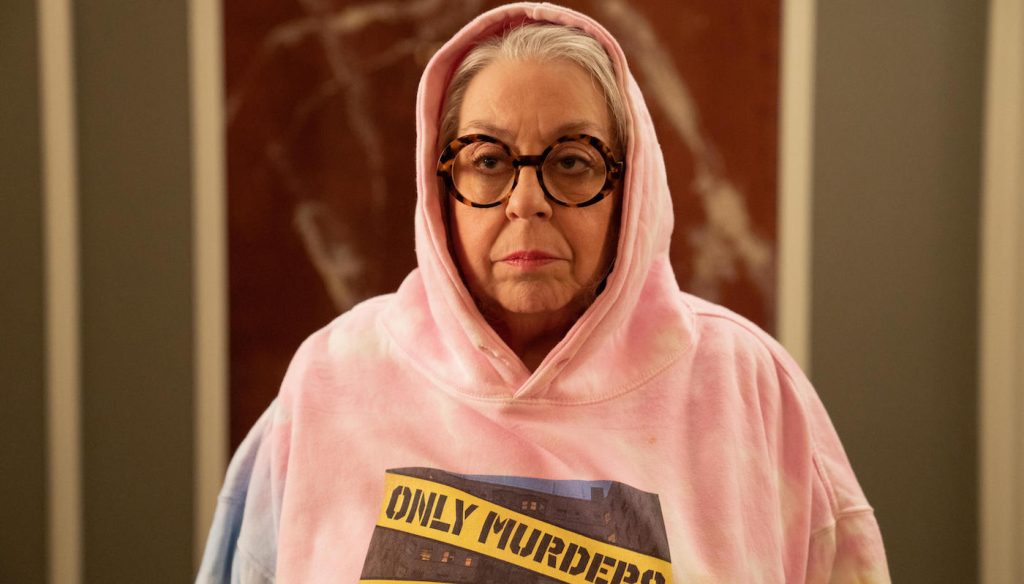Framing Big Laughs & Real Emotion With “Only Murders in the Building” Emmy-Nominated Editor Peggy Tachdjian
Emmy-nominated editor Peggy Tachdjian had never really cut comedy before leaping into the Building, as it were, of Hulu’s hit Only Murders in the Building. The series was created by comedy legend Steven Martin and John Hoffman and is led by Martin, fellow comedy icon Martin Short, and a perfectly cast Selena Gomez as three true crime obsessives living in the same New York City building, the Arconia, who quickly find themselves in the middle of a true crime scenario themselves. The series burst onto the scene in 2021 and was met with rave reviews and, ultimately, a slew of Emmy nominations. Now in its third season, Only Murders in the Building has become one of the most reliably funny shows on TV. It also routinely hits you with an emotional wallop, in what Tachdjian describes as the “joke, joke, joke, pause for emotion, joke, joke, joke” ratio.
Tachdjian earned her Emmy nomination for the third episode of season two, “The Last Day of Bunny Folger,” which, true to its title, tracks the final day for the prickly head of the co-op board of the Arconia. We spoke to Tachdjian about cutting her teeth in comedy in such a high-profile series, the beauty of the subtle moment, and the “hat on a hat” phenomenon in the comedy world.
What were you thinking when you were first told about the concept of the series and the people involved?
Season one wasn’t even out yet, and they were interviewing editors for season two. All that was out on Hulu was the trailer. When I got the call about the show, I went on Hulu and watched the trailer, and all you saw was Selena Gomez, Martin Short, and Steven Martin trying to solve a mystery. I had no concept of what the show was about, but I was like, ‘I love all three of these people, and I want to see them together.’
How do you find the joke or the moment when you’re dealing with such talented comedians and performers who I imagined leave you with an embarrassment of riches?
There’s a certain magic in watching footage. Sometimes, you’ll just hit on a certain take of one of the performers, a certain way they read a line, or a certain way they stepped into the light, and something clicks within you as an editor. You’re like, okay, this is my starting point for the scene. I’ll use that moment to build the entire scene around it. With their comedic timing, so many times it’s about how they react to each other, so you’ll be watching dailies, and some stuff will make you chuckle, but then something that they do will make you laugh out loud, and you’re like, okay, this is the take of this joke that everything else has to work around. This gave me so much joy, and I want to give the world this joy back [laughs].
The pace of the jokes is delightfully quick.
It’s joke joke joke, pause for emotion, joke joke joke. There are so many jokes within a scene. It’s a hat on a hat sometimes but in the best way. You can rewatch a lot of these episodes and catch something you might not have caught the first time. It’s intimidating because I grew up watching Steven Martin and Martin Short, right? So how am I going to do them justice? And also, I was new to comedy. I’ve never really been strictly a comedy editor before. But truly, it’s about their relationship and finding those little nuggets as Charles (Martin) and Oliver (Short) are building a friendship and forming a relationship with Mabel (Gomez).

Can you explain a hat on a hat?
We say that a lot when there’s a joke on top of a joke. You don’t need that second punchline.
I’m stealing this term. Staying with the jokes for a moment, this show appeals to a pretty wide demographic, from longtime fans of Steve and Marty to Selena fans. How does that work itself out in the comedy?
It’s generational. We have people watching our show that are there for Selena Gomez, and then we’ve got people who are watching for Steve and Marty. And the jokes that land for different people are different. There’s a lot of conversation about asking the different generations of people in post-production, ‘Did you get that joke?’ If only two out of ten people got that joke, we’re going to lose it. They’re usually jokes about either Charles or Oliver being old and jokes about references that go over Mabel’s head. Other times, it’s references to things only a millennial would get.
These “how do you not know this?” jokes are consistently funny.
The jokes about technology make me laugh all the time because it’s my constant struggle with my parents. ‘Hey, this is how you upload a file. This is how you send a photo to me.’ And Mabel having to go through it with them just makes me laugh every time.
Walk me through the creation of your Emmy submission episode, “The Last Day of Bunny Folger,” which was season two, episode three.
It starts really early with a table read and a tone read. I got the script long before they shot it. It was going to be my first episode and my first episode of a comedy show, and it’s not that comedic. It’s kind of a sad episode where she’s lonely, and we know she’s going to die at the end; it’s in the title. So, how do you bring the comedy? How do you keep the mystery of who killed her alive, even though you’re in the past? And finally, it was about humanizing Bunny because, by the end of season one, she’s a hated character. She’s been trying to get these podcasters kicked out of the building; no one really likes her, and then she’s dead at the end of season one. Maybe she deserved it? Maybe she did something terrible something to someone? And then, by the end of this episode, you really feel for her. It touched on a lot of common themes in life, like loneliness, feeling left out, and feeling without purpose. I just loved reading it, and I knew it was going to be a different kind of episode.

What kind of conversations did you have with the episode’s director, Jude Weng?
Jude was great. We had a lot of early conversations about humanizing Bunny. Whenever she was shooting, she got really great coverage. There are a lot of really beautiful moments with friends and Bunny’s bird and slice-of-life moments with Bunny that she captured. And Jayne Houdyshell, who plays Bunny, is just an amazing actress. She’s still snarky, and she’s still cursing everybody out, but it’s in this loving way, whereas in season one, she was kind of b*tchy, and now she’s more three-dimensional.
To bring Bunny back from being thoroughly unlikable was quite a feat.
It was fun. I think it’s what I like about editing, that you can change people’s minds about things. A certain music cue can make you feel emotional, or a certain look from a reaction shot can make you feel something for someone that maybe you wouldn’t have felt without it. There’s this great moment where Bunny brings over the champagne to celebrate with them, and then as they grab the champagne and the door closes, Jane has this performance where her face just falls completely. I remember seeing it in the dailies and thinking, that’s just heartbreaking, and that’s the magic I was talking about before when, no matter where else the scene goes, that’s the shot I’m using to fit everything else around it. That’s the moment you feel something, and I love being able to get other people to feel that, too.

Featured image: Only Murders In The Building — “The Last Day Of Bunny Folger” – Episode 203 — A foul-mouthed parrot becomes a critical window into Bunny Folger’s last day on Earth. Some of the individuals with whom Bunny crossed paths will surprise both you and our trio… Along the way, a reveal deepens our trio’s need to solve Bunny’s case. Charles (Steve Martin), Mabel (Selena Gomez) and Oliver (Martin Short), shown. (Photo by: Craig Blankenhorn/Hulu)



